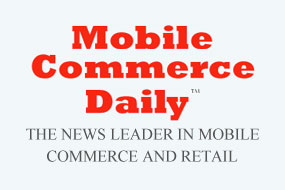Despite multiple product launches, Facebook’s challenge remains making sure marketers are educated on how to get the best results from the platform. “Offerings like the ad relevance scores that Facebook implemented back in February are essentially Facebook doing everything it can to present value to advertisers, and judging by their steady growth in revenue it’s […]
Category Archives: Articles
Ken in the Access Direct Blog: Looking Big, Even When You’re Not
A public relations campaign can go a long way toward making a small company look big, agrees Ken Wisnefski, CEO of WebiMax. “The key strategy should be pitching people inside your company as expert sources to the media. Though, it can certainly take a bit of patience and a lot of reading to figure out which […]
Google’s Mobile Push: April 21st is coming, is your business ready?
At the end of February, Google announced that beginning April 21st, websites that were not ‘Mobile-Friendly’ would go down in Google’s page ranking system for mobile search and subsequently lose significant web traffic. For business execs that count on their website to drive sales, this can have a very real effect on the bottom line. […]
Ken in Mobile Marketer discusses Chevrolet’s viral April Fool’s Day Campaign on You Tube
The program’s success underscored how YouTube has become a viable platform to promote messaging, because its videos are shared frequently and users can go back and view them at their convenience, said Ken Wisnefski, founder-CEO of WebiMax. Click Here To Read the Full Article
Ken Wisnefski in the Cision Blog discusses Facebook’s push to host news stories
According to social media expert Ken Wisnefski, traffic to the news sites may decrease, but consumption of stories in the newsfeed will increase and of course, revenue from the deal and ads that run alongside the content are a possibility. “The worry for publishers is that Facebook has the power to decide what shows […]
Ken Wisnefski offers a marketing tip in Fit Small Business
The sudden rise in use of mobile technology and the innovation in that technology is opening up new opportunities for small businesses to increase their foot traffic and sales. Next time you’re in a public space look around and you will see a lot of people on their mobile devices, and chances are […]
Ken Wisnefski lends his 2015 SEO insights to the Leftmark blog
“Something ecommerce companies can no longer afford put off is making sure their web-site is ‘Mobile-Friendly.’ Google announced at the end of February 2015, that beginning on April 21st , 2015, sites that do not adhere to Google’s Mobile-Friendly criteria will see a lower rank, meaning if your site was only designed for desktop computers […]
Ken Wisnefski in Mobile Marketer on Facebook Broadening Messengers reach
“Everything Facebook is doing right now is significant because they are completely overshadowing Google as becoming the most vital aspect for advertisers and marketers,” said Ken Wisnefski, founder-CEO of WebiMax. “Facebook is becoming more and more of a true destination site,” he said. “You login to Facebook, you have your news, your shopping, […]
Ken Wisnefski quoted in Happi Magazine on Facebook hosting content from News Sites
“By originating that influential content on Facebook itself, the social platform eliminates, by some degree, the need for its users to go searching anywhere else for content,” he explained. “I doubt that true influencers will ignore other valuable information sources, however many casual Facebook users may not find it as necessary to venture off […]
Ken Wisnefski discusses how to choose a Reputation Management Service in Business News Daily
“The reality is, if you look at a reputation or crisis management plan, you need to have it customized to meet your needs and you need to understand the depth of your problems,” said Ken Wisnefski, founder and CEO of ORM provider WebiMax. “A lot of times, people think something’s a big deal when it’s really […]
Ken Wisnefski in Talking New Media discusses Facebook’s deal to host popular news site content
“Facebook has become a place to see and discover interesting things via our peers. However, those interesting things have always had to originate from somewhere outside of the Facebook environment” said Ken Wisnefski, CEO of the internet marketer, WebiMax. “By originating that influential content on Facebook itself, the social platform eliminates, by some degree, the need […]
Ken Wisnefski in CIO discusses why people unsubscribe to email lists
“If you neither email people with any new or interesting information nor any promotions of any real value, then what are you emailing them?” asks Ken Wisnefski, CEO, WebiMax, an Internet marketing company. “People are busy and they get a lot of email. If you want people to stay subscribed, and open your email, there […]
Ken Wisnefski Discusses Facebook’s purchase of e-commerce search engine The Find
“This is an interesting move because it clearly shows Facebook is becoming more interested in selling products via their platform,” said Ken Wisnefski, founder/CEO of WebiMax, Camden, NJ. “Which is a bit of a deviation from where they positioned themselves in the past. “The fact mobile purchasing is on such a growth curve, integrating features […]
Ken Wisnefski in Fierce Big Data discusses Lyfts growth into other markets
“Though Lyft’s 2.5 Billion valuation appears to pale in comparison to Uber’s $41 Billion, transportation network company supremacy is still anybody’s game,” said Ken Wisnefski, founder and CEO of leading internet marketer, WebiMax. “The mobile app transportation industry is still a fledgling industry–and while Uber is certainly the larger of the two companies operating in […]
Ken Wisnefski in AdWeek discusses the robot from the film Ex Machina tricking potential daters on Tinder
Marketers for the new film Ex Machina, about a robot wanting to know what it’s like to be human, created a fake Tinder profile/bot after the film’s lead robot character and proceeded to first flirt then lure SXSW attendees to look at promotions for the film. “While this was a great ploy […]
Ken Wisnefski in America Latina Business Review on Lyfts recent $2.5 Billion valuation
Below is a translation of an article that appeared in America Latina Business Review: According to Ken: Tech start-up valuations can seem over-blown as of late, but in the case of companies like Lyft and Uber who are very clearly generating revenue from consumers and delivering something of value, these sky-high valuations are more than […]
Wal-Mart’s Loss is Other Retailers Gain in Google’s Local Inventory Ads
Mobile tech is here to stay – streamlining once mundane tasks with ease. Nowhere is this movement more evident than in marketing. Today the trend seems to be hyper-local advertising, and brick and mortar retailers seem to be the big winners here. Where it used to be common to hear predictions of the end to […]
Ken in Retail Dive discusses Wal-Mart dropping Google’s Local Inventory Ads
“The kind of inventory-related information that connects people to the products they are looking for before they leave the house is such an advantage to brick-and-mortar retail at this stage that Wal-Mart’s exit from the program should not be too alarming,” Ken Wisnefski, founder and CEO of the internet […]
Ken in the Courier Post on WebiMax’s Move to Camden
COMMENTARY: WebiMax glad to be part of Camden I wanted to comment on a letter to the editor that stated that businesses should give back to Camden as part of the process of moving their companies there. As the founder and CEO of WebiMax, I absolutely agree with that statement and agree that our company, located […]
Ken Wisnefski in Mobile Marketer on what the FCC’s Net Neutrality regs mean for Mobile
“I would specifically feel the impact will not be all that dramatic except down the line with the fact premium based services may change, which would alter how some marketers display their messages,” said Ken Wisnefski, founder/CEO of WebiMax, Mount Laurel, NJ. “I am still a bit unclear though of the range of […]



















